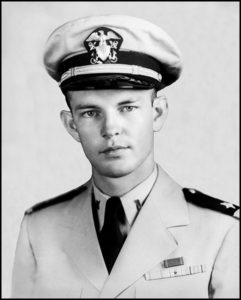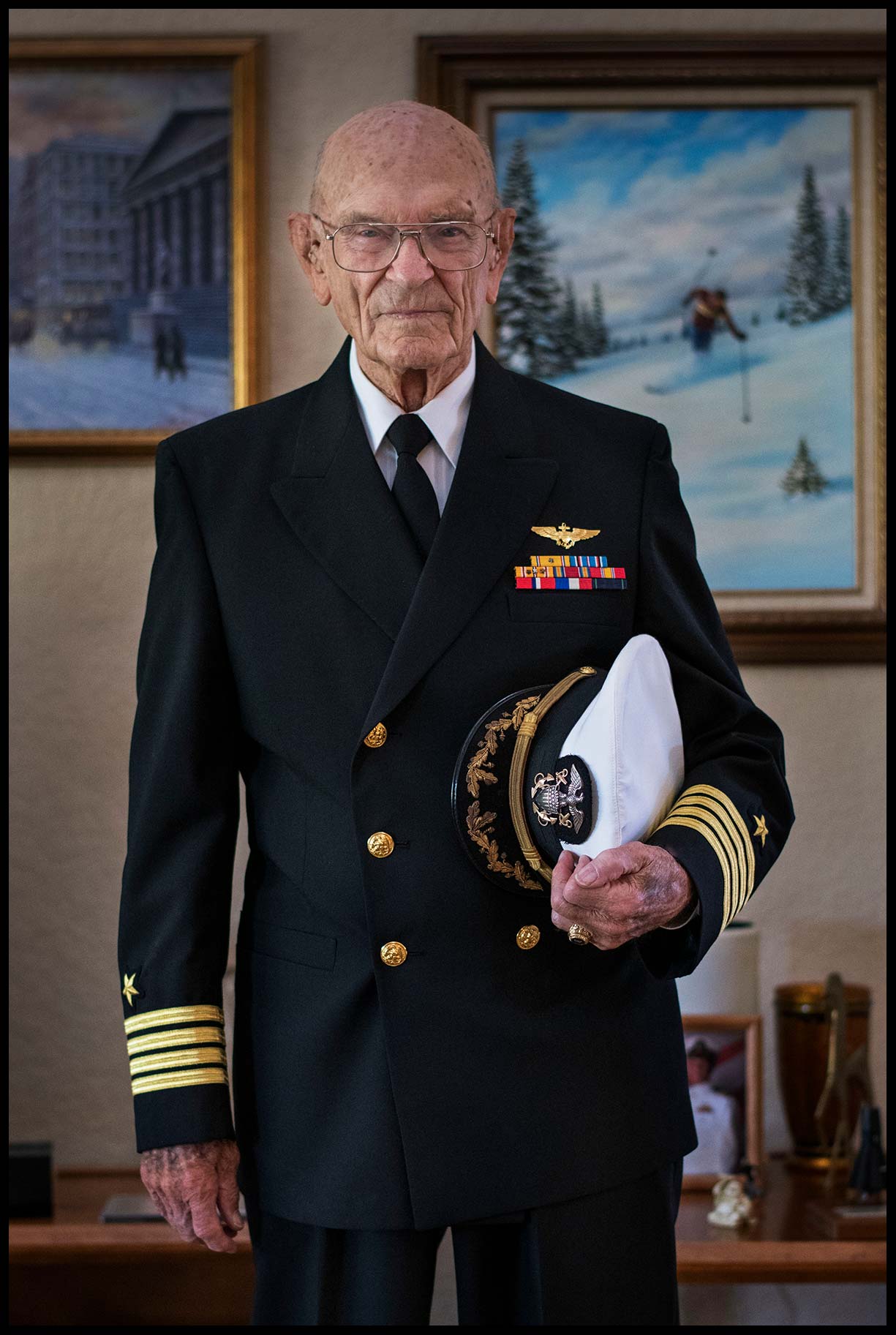Bill Wakeland
Stationed on
USS South Dakota
Bill Wakeland
Captain, U.S. Navy, Ret.
1943–1965

Ensign, Bill Wakeland
Shreveport, LA, 1943
I was assigned as assistant navigator to the battleship South Dakota in the South Pacific…. We operated with the Fast Carrier Group to support the islands and made raids on Japanese positions in the Gilberts, Marshalls, and Carolinas.
I was born November 14, 1921 and grew up in New Orleans. I was a civil engineering student for two years at Tulane and was in Naval ROTC. I got an appointment to the Naval Academy and graduated in 1943. I applied for aviation, but graduates went to a ship before they went to flight training. I was assigned as assistant navigator to the battleship South Dakota in the South Pacific from June, 1943 to December, 1944.
We operated with the Fast Carrier group to support the islands and made raids on Japanese positions in the Gilberts, Marshalls, and Carolines. When MacArthur landed at Leyte Gulf in the Philippines, Halsey’s Fast Carrier and Battle groups partially supported the invasion.
I was then transferred back to the States for flight training and became a dive bomber pilot. I was assigned to the Midway Air Group for two years. We went on a Mediterranean cruise for six months in 1947-48. The purpose was to demonstrate U.S. presence in that part of the world. Italy had elections coming up and the communist party was strong in the northern industrial part. The whole air group of 80 planes made an air parade over northern Italy.
After that I was selected for post-graduate school in Annapolis. When I finished in 1951 I had a bachelor’s in aeronautical engineering and a master’s in electrical. I became an AED (Aeronautical Engineering Designate). My first duty was Commander Air Force Atlantic Fleet Staff in Norfolk. I was in charge of aircraft electrical systems for four years. My next duty was the Bureau of Aeronautics in Washington, D.C. in the electrical division in charge of fighter aircraft. I finished there in 1958.
I’d just made commander and was assigned to the Naval Missile Center at Point Mugu, California, in charge of the Naval testing facility for the Regulus II. It was a pilotless version of the Air Force’s F-4 with a nuclear warhead capable of being launched from a submarine. At the same time, the submarine-launched missile Polaris was making great strides and was a more effective vehicle. After I’d been there for about two years the Regulus program was canceled. I was put in charge of another program for the air-to-air launch missile called the Eagle. In a year’s time, that program was canceled. My best duty was Point Mugu. That was the first time that I got into the development part of engineering.
I was assigned to the Gemini program at NASA on loan from the Navy from 1962-64. I was in the base operations of the Gemini program in charge of the Agena and its development. The Agena was an already-developed and successful satellite of the Air Force. In order to carry out the Gemini mission, the Agena had to be able to restart its engine in orbit. There was no means to restart it, so that was one of the modifications. The Agena wasn’t built with a docking collar and a way to electronically communicate with the object that’s docked with it. Those had to be built.
I got selected for captain in 1964 and was moved to a Naval assignment in charge of the electrical/electronic laboratory in Johnsville, Pennsylvania. I was 44 when I retired from the Navy in 1965, and decided that I wanted to teach engineering in college. I got my Ph.D. at the University of Houston. I taught at Trinity University and was in charge of the engineering science department. Then I was head of the electrical engineering department at Lamar University for 12 years, and fully retired in 1980. {05-14-2019 • San Antonio, TX}
